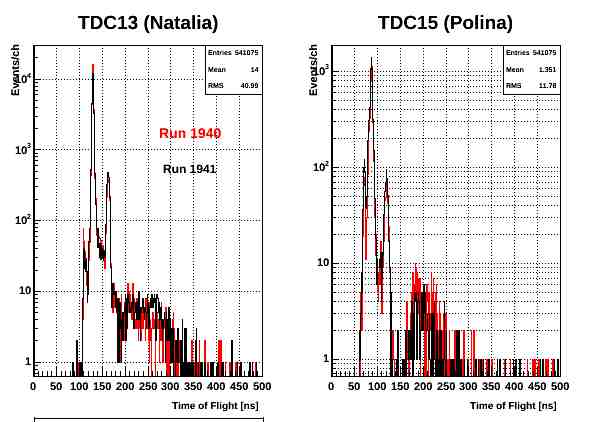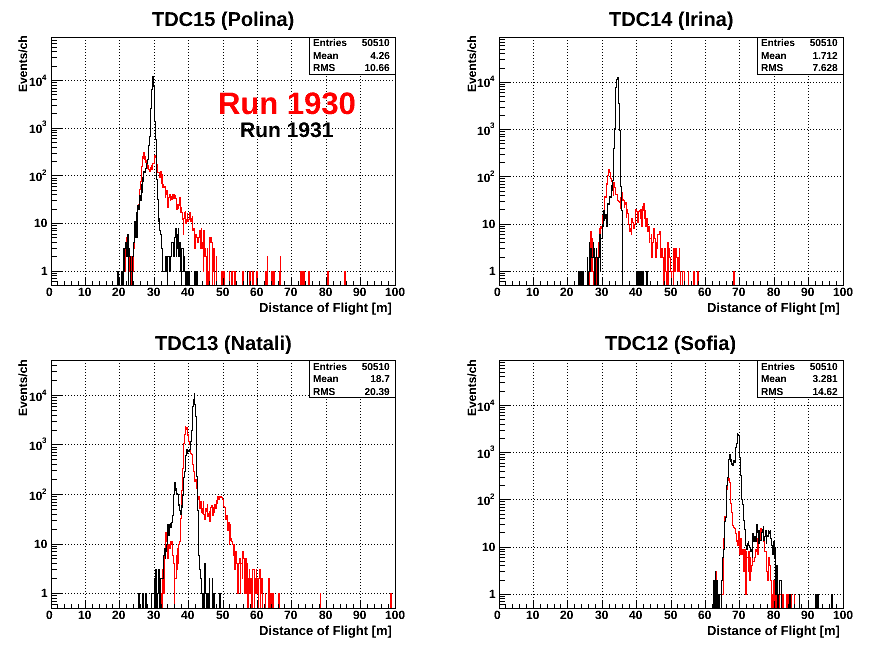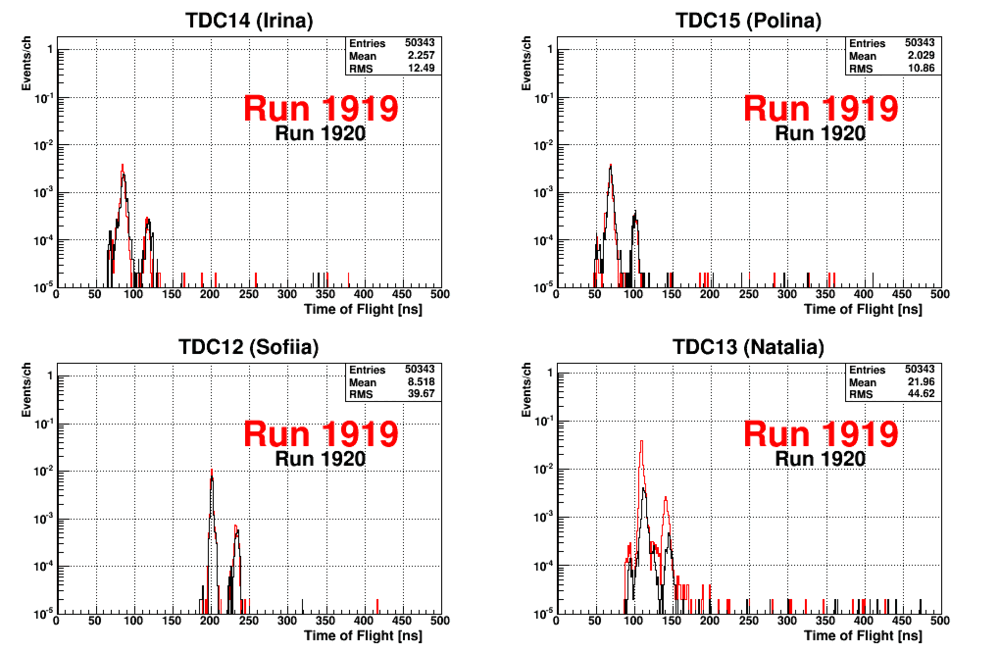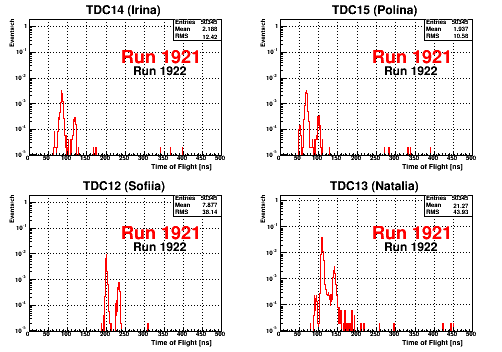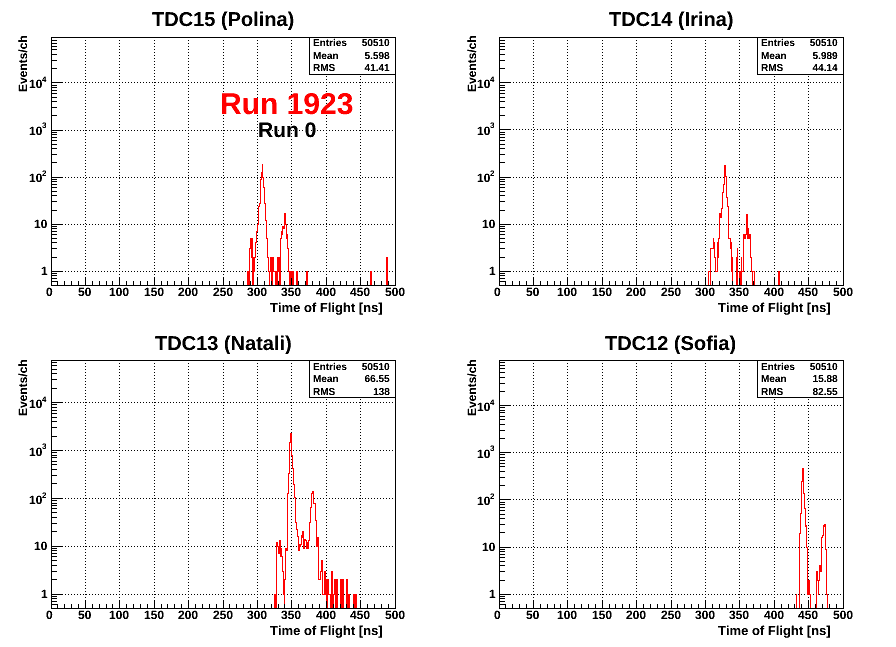Double Peak Analysis
Gamma Peak Analysis
The point is to determine why we have all these peaks around the spot the gamma flash is supposed to be. First, I will do an analysis to see exactly where the gamma flash is. Then, we should be able to do some tracking down of what the other peaks are from by converting the TDC spectrum into a distance scale to see how far away the other peaks are, assuming they are from gammas.
Calibration Runs
The lead in front of the neutron detectors was removed. Run 1930 shows the results with no physics target, and 1931 has a D2O target.
Distance Spectrum
The TDC spectra were then converted to a distance scale.
As can be seen, we have one peak to the right of the gamma flash and two to the left.
Water Stop
A water stop in/out test was done in trying to determine where the gamma peaks are from. The water stop is located upstream before the 90 degree bend in the beam line. The water stop is a pool of water that can be placed into the electron beam used to determine the beam current, cutting the current down by some ratio. The radiator was removed for this test. Run 1919 is with water stop out and 1920 has water stop in.
Not much of a difference is seen, just maybe a slight shift in peaks.
Gate Valve
The next test I looked at is where the beam gate was open and closed. In run 1921 the gate valve is open, and 1922 gate valve closed.
As can be seen, there is nothing when the gate valve is closed. This concludes that all the structure comes from somewhere after the gate valve.
Blocking Collimation Hole
The nest test I looked at is where the off-axis collimation hole was blocked on the accelerator hall side with 8 inches of lead. Run 1924 is with a D2O target and 1925 is no target.
